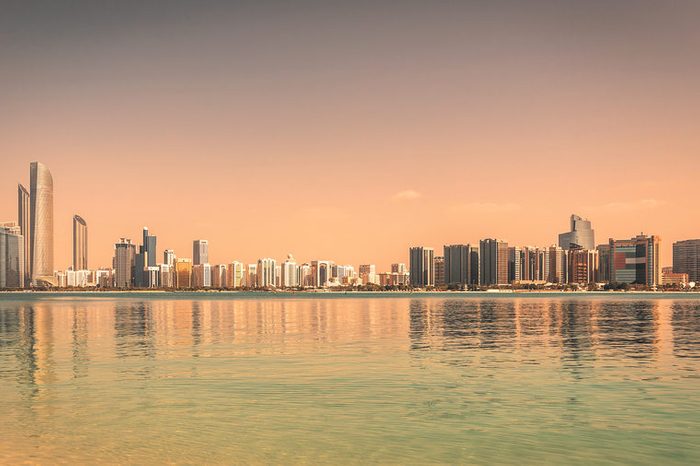
20. United Arab Emirates
Considering the UAE has an official Ministry of Happiness, this ranking may seem a bit low. This government body has a stated mission: “To have happiness and positivity as a lifestyle and the higher purpose of government work in the UAE.” They may be 20th on the World Happiness Report, but according to Khaleej Times, the UAE is the top happiest country in the Arab world. Highly diverse, this small country is known for its wealth and modern architectural wonders.
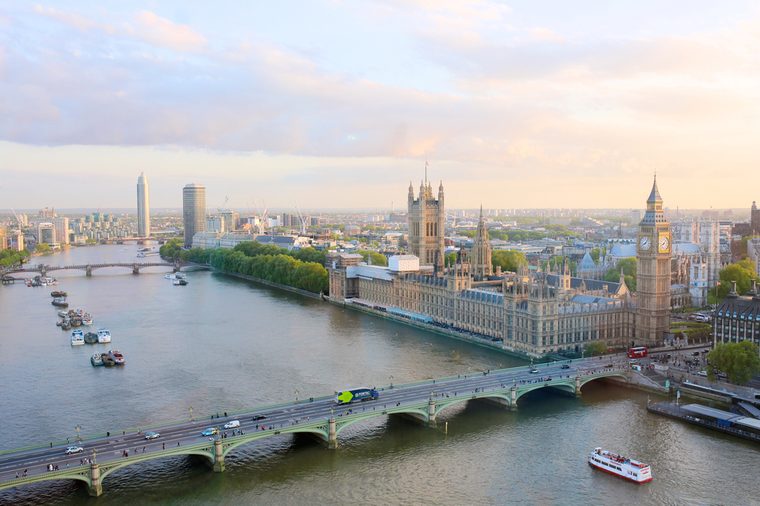
19. United Kingdom
Comprised of England, Scotland, Wales, and Northern Ireland, the United Kingdom is technically a state, made up of four countries. It’s an economic and military powerhouse and a significant cultural influencer. The United Kingdom’s population is perceived as being more stalwart than happy, but people here have a lot to smile about. Employment figures are up, as are people’s perceptions of their significant relationships, according to Quartz Media. Plus, they recently celebrated the history-making wedding of Prince Harry and Meghan Markle.
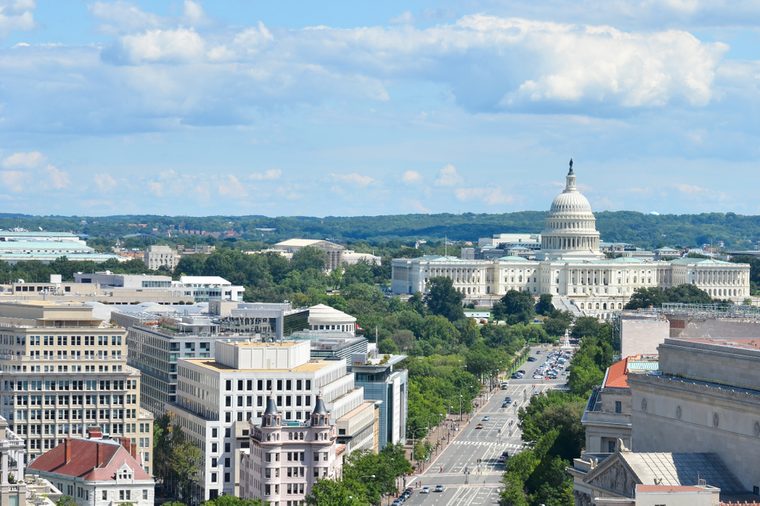
18. United States
This year saw the States tumble four spots, from number 14. According to the World Happiness Report authors, this is due to multiple public health crises affecting the country, including opioid addiction, major depressive disorders, and obesity. Don’t miss these 50 easy habits that can help you live longer.
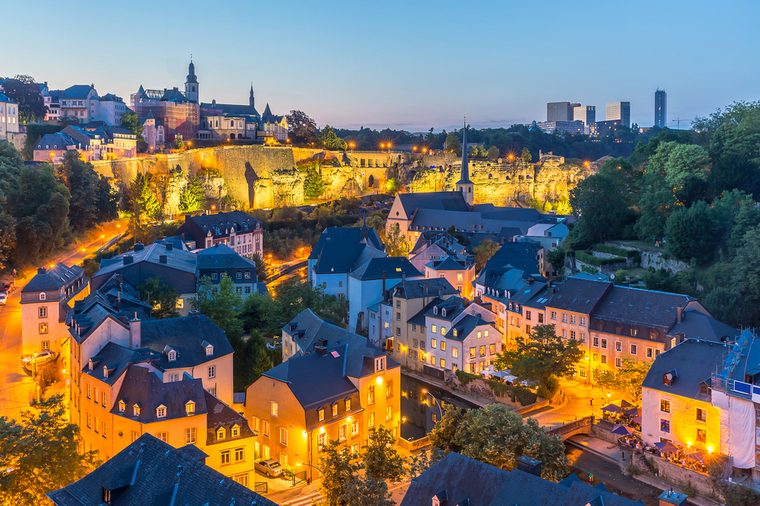
17. Luxembourg
This small rural country is filled with natural parks and fairytale castles. A recent study, reported in GEO, ranked Luxembourg’s capital city as one of the most relaxed cosmopolitan areas in the world. The green space, low-density population, and a calm national character support the positive mood. Here are 18 things happy people never do – so you shouldn’t either.
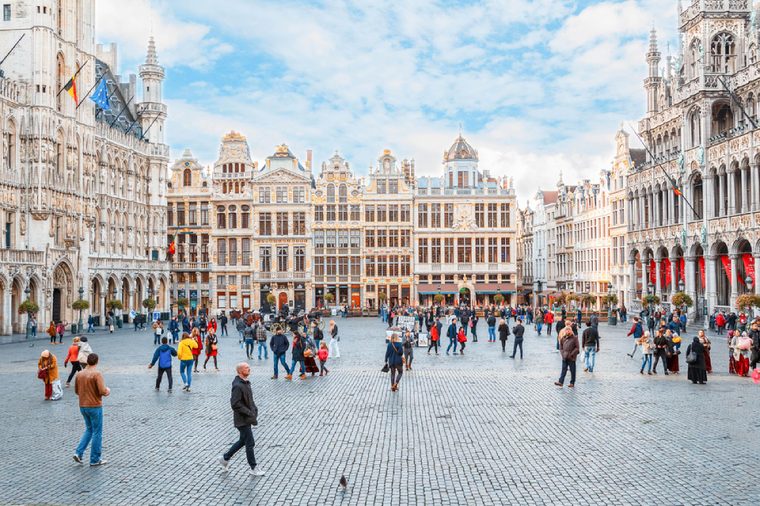
16. Belgium
Despite deepening concerns about terrorism, Belgium continues to rank alongside its closest neighbors in happiness. Belgium boasts a good work-life balance, better-than-average incomes, civic engagement, and excellent education. Belgians also ranked high on their social support networks.
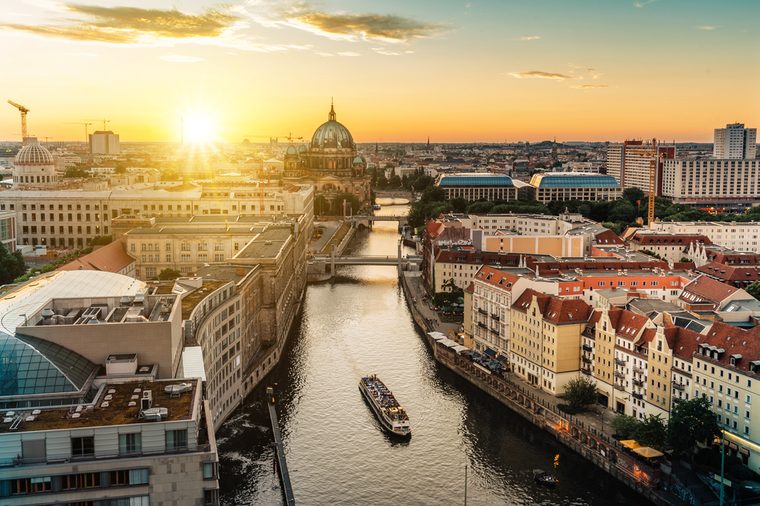
15. Germany
Boasting low unemployment and a thriving economy, Germany scored high in life satisfaction, according to Quartz Media. And then there’s Germany’s energiewende—a model of how energy use can be transformed to help ward off climate change. As a result, the country is leading the way on renewable sources for electricity like wind and solar power.
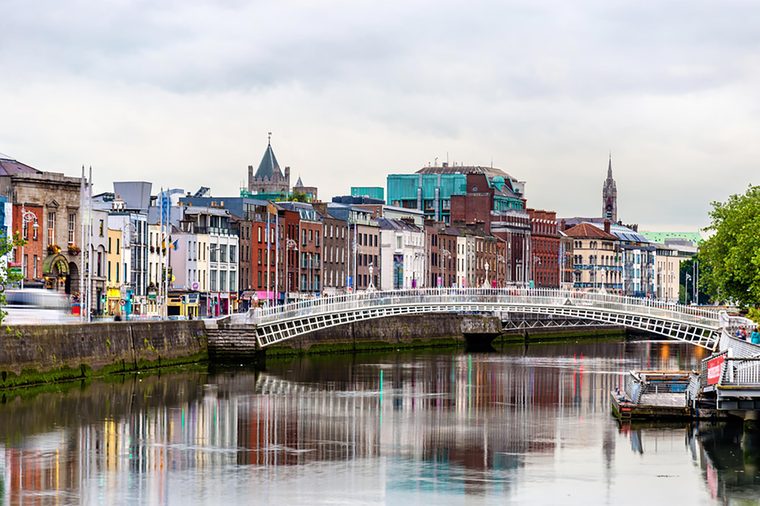
14. Ireland
Life expectancy in Ireland has climbed considerably since 2000. Social services have also been expanded to better care for those in need. Ireland also welcomes immigrants—the country ranked 11th on the World Happiness Report’s list of most tolerant countries. It also helps that Ireland’s green landscape makes it one of the most beautiful places in the world to walk and hike.
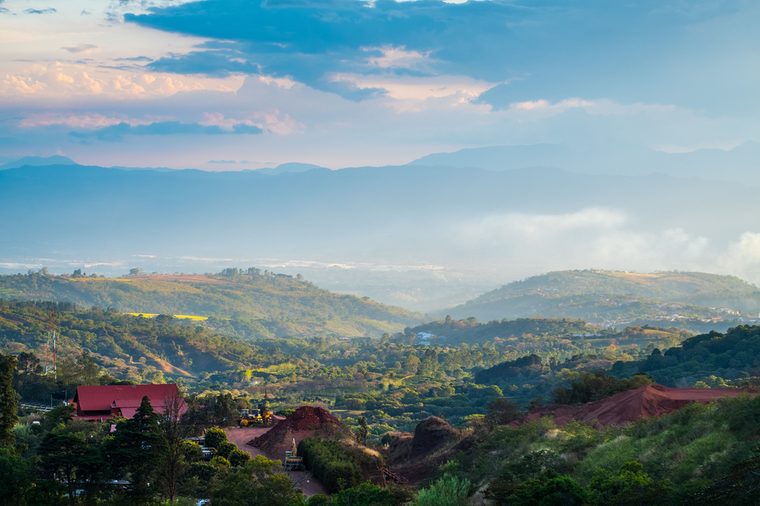
13. Costa Rica
Considered by some to be the healthiest place on earth, Costa Rica is home to the Nicoya Peninsula, one of the world’s few “blue zones”—a place where people have the longest life expectancy; many residents live well past 100. Others make it to a ripe old age without serious illnesses. Families and friends live and work in tight-knit circles. Costa Rica was demilitarized decades ago, and its national military headquarters were converted into an art museum. Funds once spent on fighting are now reserved for environmental preservation, healthcare, and education. Costa Rica is also one of the 10 best places to travel alone if you’re a woman.
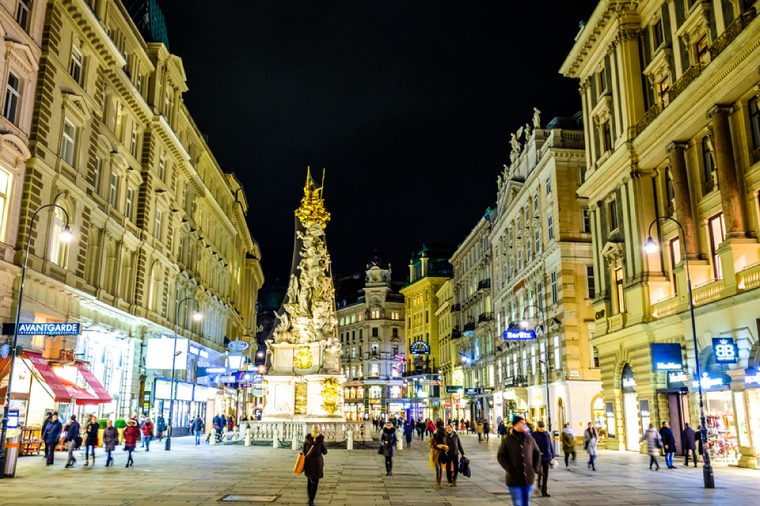
12. Austria
Austria moved up one spot in this year’s report, perhaps in part because unemployment is so low and the population is well educated: 85 percent of adults have achieved a secondary education or higher. But what really sets Austrians apart is a strong sense of community and civic duty—75 percent of Austrians vote. Don’t miss this inspiring story about a woman who quit her job to travel the world.
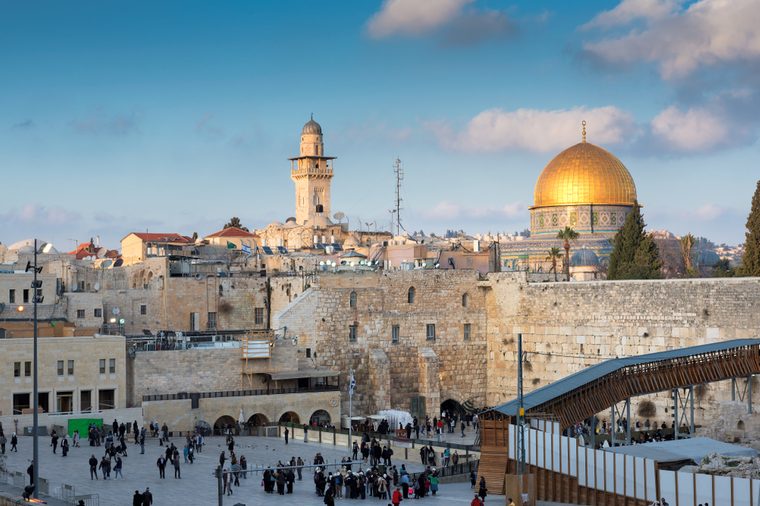
11. Israel
With one of the highest life expectancies in the world, Israel achieves this enviable goal through a common-sense health care system that is both accessible and cutting edge. Despite problems along its borders, Israel has recently taken in a large number of Russian immigrants who report higher rates of happiness in their new country than in their old. (It didn’t make the list of top 20 happiest countries, but this desert region is becoming the ultimate wellness destination.)
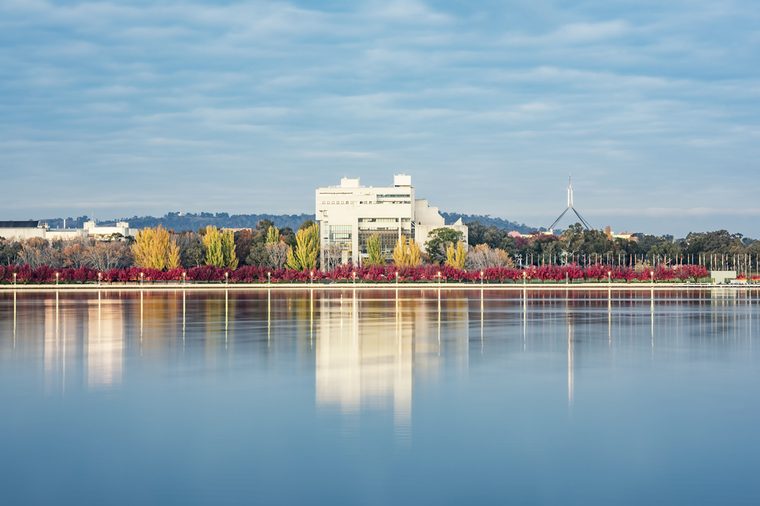
10. Australia
Australia slipped one place down in this year’s report, from number 9 to 10. That fact doesn’t faze Australians, however, who embrace the great outdoors and their fellow citizens. It doesn’t hurt that the country is also prosperous. (This Australian beauty brand is now a cult fave in Canada.)
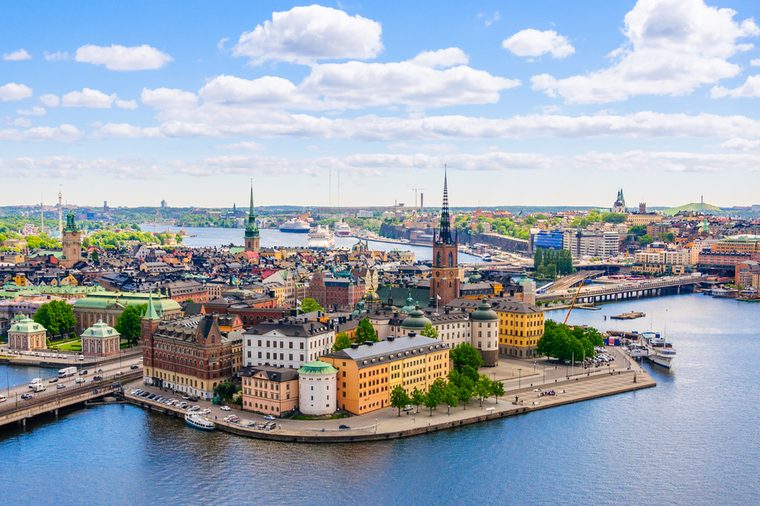
9. Sweden
Their taxes are high, but their health care and higher education are free. (And we know that health has a lot to do with happiness.) Swedes are committed to making sure that the people who live there get the training they need to adapt to an ever-changing, technological landscape. Plus, everyone is always smiling. Their legendary happiness may be, in part, generated by Sweden’s rich communal spirit. They also abide by the spirit of lagom—a word with no English counterpart. The closest definition is that you’re content with what you have, and you enjoy all things in moderation.
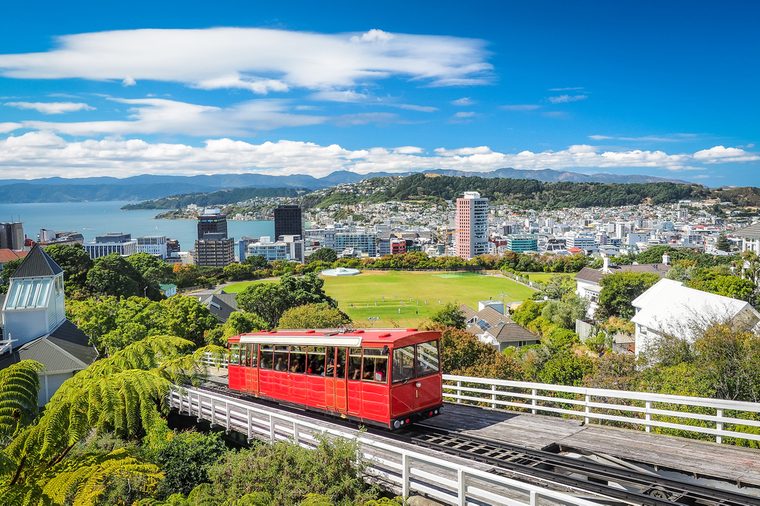
8. New Zealand
Kiwis’ happiness may have more to do with attitude than anything else: Unimpressed by status or money, they’re more likely to be found exploring nature than working overtime. Immigrants to New Zealand are accepted as locals even before they gain citizenship. (You need to establish residency here for five years, before taking the plunge).
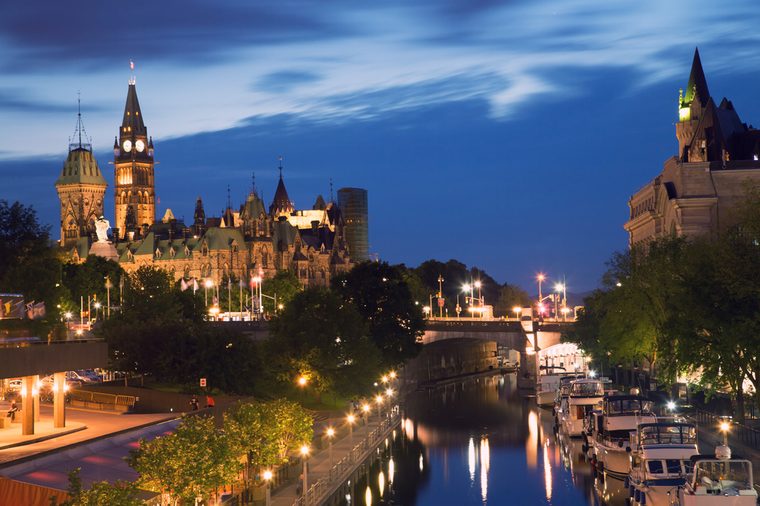
7. Canada
Known for our good manners and legendary niceness, Canada has consistently ranked in the top 10 happiest countries (ranking between fourth and seventh) since the first report was published six years ago. We have access to free health care, a good life expectancy and a healthy work-life balance. Plus, self-care and mental health are becoming more of a priority, in part thanks to these Canadian wellness retreats.
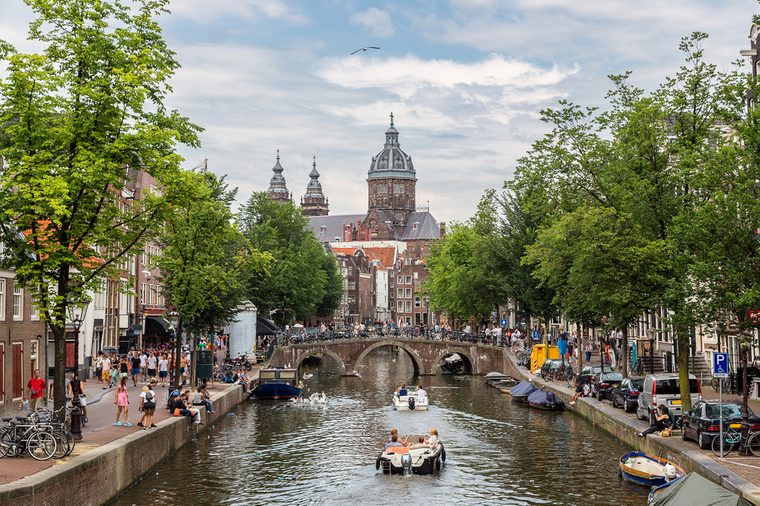
6. Netherlands
Maybe the Netherlands gains its happiness through the pleasure of knowing that their farms help feed millions of people outside the country’s borders. Their national commitment to sustainable agricultural practices has yielded a greener way of life throughout the society; this commitment extends to the way babies are born, according to NPR. Most Dutch women choose a home birth over a hospital one, and only 8 percent use pain medication. The people of the Netherlands are also notoriously welcoming of others, embracing cultural diversity, and immigrants from many nations. (This is how millennials are travelling in 2018.)

5. Switzerland
The first things that come to mind when people think of Switzerland are the majestic Alps and heavenly Swiss chocolate. But the key to their happiness appears to be the governmental efficiency that ranges from the local to the national level. The Swiss have very little anxiety about their politics, which may explain their notoriously calm natures. According to the OECD (Organization for Economic Cooperation and Development) Better Life Index, Switzerland ranks high in terms of housing, personal security, work-life balance, disposable income, and green living.
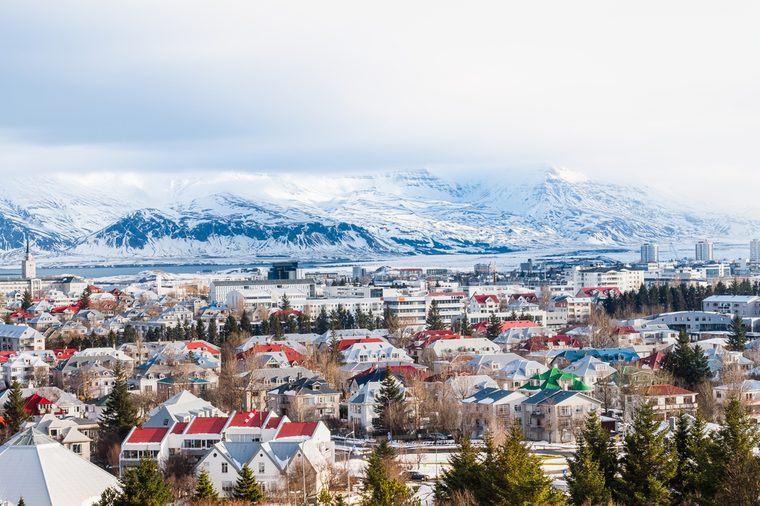
4. Iceland
The most sparsely populated European country, Iceland boasts an enticing mix of ancient tradition and modern economic growth. Iceland is the land of the midnight sun, but also, of ever-darkening winter days and bitter cold. Could the reason for the country’s outlook be found in the water? According to the New York Times, Iceland’s communal pools—all heated, many by natural hot springs—are the heart of each community, fostering well-being, and camaraderie during the harshest winter months. An interesting Icelandic fact: Most of this freezing cold country is heated by geothermal activity, making it one of the greenest on the planet. Plus, those vikings know how to exercise effectively.
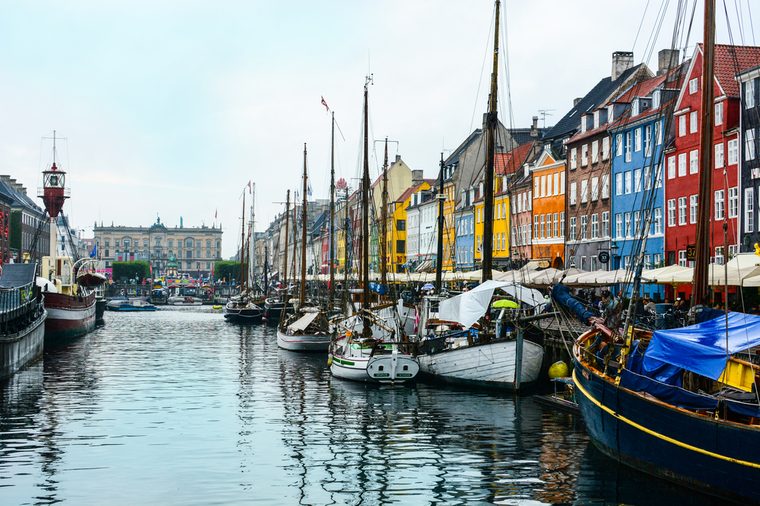
3. Denmark
Yes, the taxes in this colourful country are high, but so is the quality of services provided to its citizens. Here, everyone is well cared for, including the elderly, people with disabilities, and kids. Parents get a year of paid parental leave, college students get free tuition, child care is covered for working parents, and citizens get a pension they can actually retire on. Don’t miss these health secrets from Scandinavia.
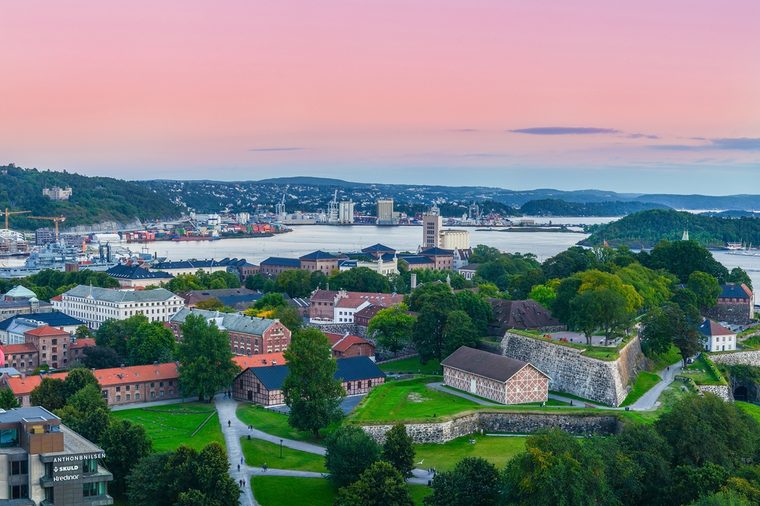
2. Norway
Their work week is shorter than ours, and their vacations are longer. Folks lucky enough to live in Norway get out of work early to pursue their passions, including activities such as hiking, biking, hanging out with their kids, and socializing with friends. As reported in The Nation, Norway fuses the concepts of democracy and equality. The result is less income disparity, and more job satisfaction, as well as a heightened sense of trust in elected officials. Also: An easy equality exists between men and women, which helps ensure the absence of a glass ceiling. Don’t forget that Norway has some magnificent Northern Lights shows.
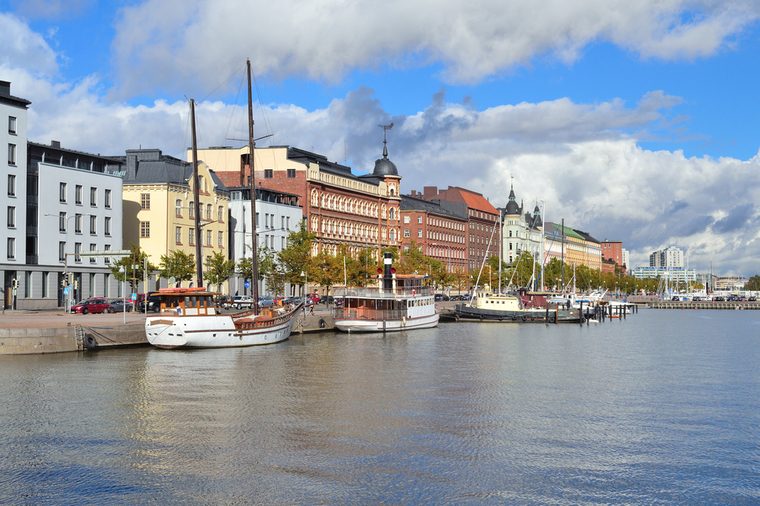
1. Finland
This year’s winner, at number one, is Finland. Finland’s citizens polled highest for the report’s most significant happiness criteria: a good life expectancy, strong social support, equitable income distribution, generosity, trust, and freedom. Finland’s commitment to support its burgeoning refugee population may help explain their high ranking. According to findings from California State University, San Diego, immigrants in Finland are provided with enough support to get started on the road to self-sufficiency; they’re also taught to speak Finnish immediately to help them assimilate. Immigrant children are provided with everything they need to excel in school, and their parents are paid to go back to school, to learn history, and absorb Finnish culture. Yet the country also celebrates the diversity immigrants bring. All those saunas probably help pick up the spirits, as well: At last count, Finland boasted having almost as many saunas as people—3.3 million.
Next, check out 13 things psychologists wish you knew about happiness.
